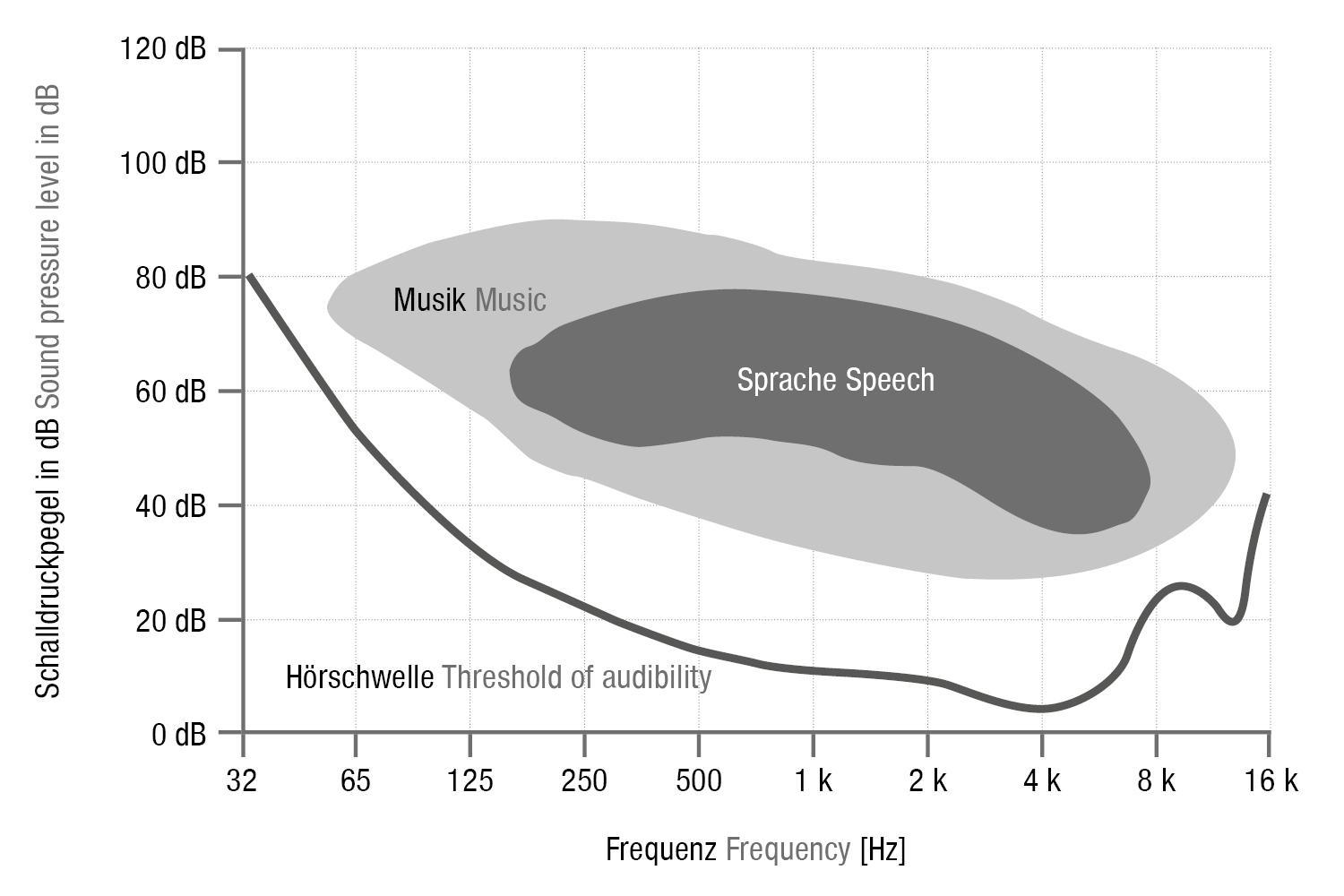[The ABC's of Acoustics]
Good acoustics" depends on an immense number of parameters and always also on the intended use of the room that is to be acoustically optimised. In order to be able to recognise and improve the acoustic properties of a room, one must therefore not only consider the physical principles of acoustics, but also take into account the subjective perception of sound and various acoustic phenomena. The "Little ABC of Acoustics" serves to provide an overview of the most important basic acoustic terms that must be taken into account when selecting the correct materials.
[Human Hearing]
Our human ear perceives fluctuations in air pressure, which are called sound waves and are triggered by a sound event. The pitch of a sound event is determined by the frequency of the sound ƒ, i.e. by the number of oscillations per second, described by the SI unit hertz [Hz]. The lower the frequency, the greater the respective wavelength of the sound wave, whereby the human ear perceives frequencies from approx. 20 Hz to 20,000 Hz. In acoustic planning, all parameters must always be considered frequency-dependent in order to ensure clean and meaningful planning.
Not all audible signals cover the complete frequency range of human hearing. Human speech, for example, ranges from approx. 125 Hz to 8 kHz. This range is therefore particularly important for planning room acoustics. The frequency composition of a signal results in the characteristic timbre of the signal. A sound event must also have a certain volume in order to be perceived by the ear. This is called the hearing threshold, which is also frequency-dependent. The human ear is most sensitive to sounds in the range between 500 Hz and 4 kHz. Sounds in the bass range below 100 Hz are only perceived at high volume.
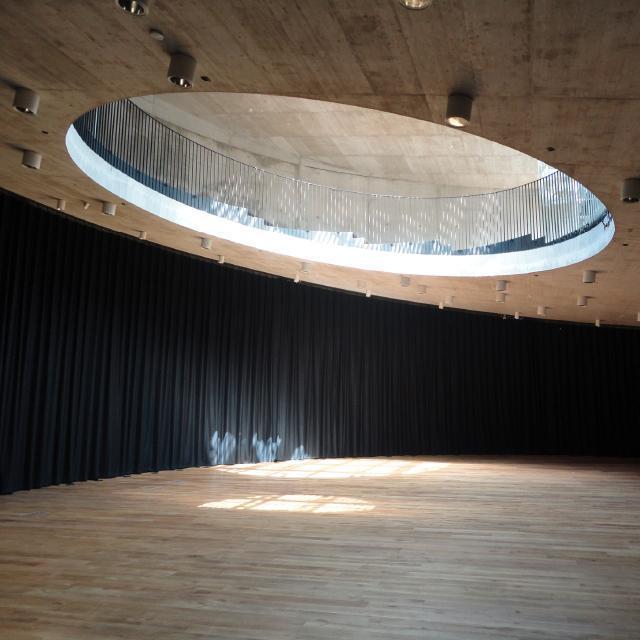
[The sound pressure level]
The physical quantity used to indicate the strength of sound events is the sound pressure, measured in Pascal [Pa]. The human ear can perceive a very wide range of pressure fluctuations in the air. Between the hearing threshold (about 20 μPa) and the pain threshold (20 Pa), there is a factor of 1:1,000,000. For a clear presentation, the sound pressure is given as a ratio to the hearing threshold, which also corresponds more to the human hearing impression. This results in the unit decibel [dB] for volume.
[Typical sound pressure levels]
| Sound pressure p [Pa] | Sound pressure level LPA[dB] | |
| 20,0 | 120 | Propeller plane at 100 m (328 ft.) distance, pain threshold |
| 2,0 | 100 | Jackhammer, loud rock concert |
| 0,2 | 80 | Main road, loud shouting |
| 0,02 | 60 | TV at room volume, normal conversation |
| 0,002 | 40 | Basic noise level in the office with fan noise, whispering |
| 0,0002 | 20 | Quiet bedroom, recording studio |
| 0,00002 | 0 | Hearing threshold at 2 kHz |
[Building acoustics vs. room acoustics]
If we now look at the effects of sound on people in an enclosed space, we can see the following fundamental difference:
| Cause | Area | Solution |
| Disturbing sound penetrates the room from outside | Building acoustics | Sound insulation |
| Unpleasant propagation of sound within the room | Room Acoustics | Silencing |
In the field of building acoustics, one is therefore concerned with the question of how sound can be prevented from entering a closed room, i.e. with sound insulation. Room acoustics, on the other hand, is the study of the propagation of sound within closed rooms and attempts to investigate by which means the propagation of sound can be optimally influenced inside the room, often by means of sound attenuation (absorption) and targeted reflection or diffusion.
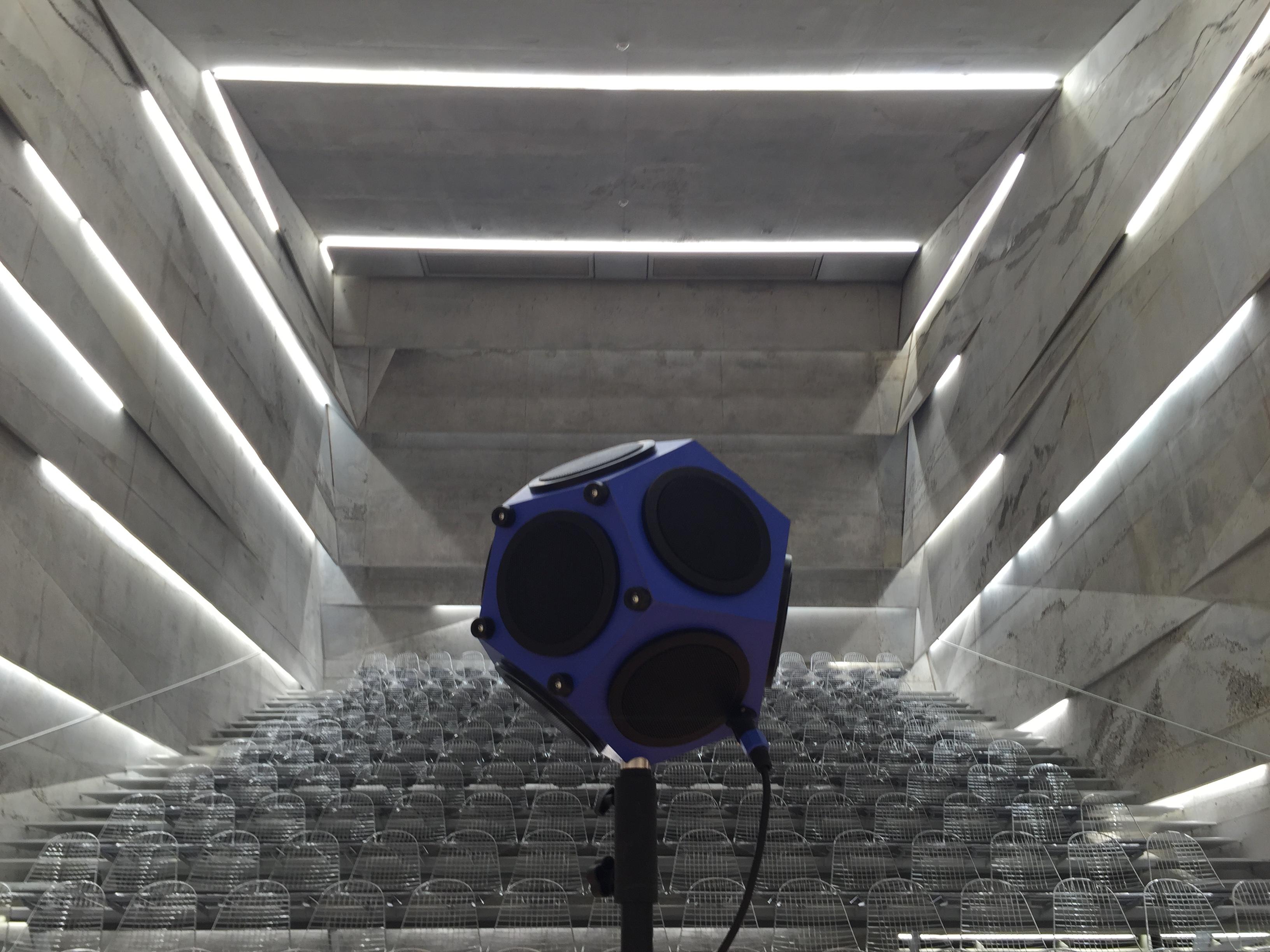
[The reverberation time]
The most important measure when considering room acoustics is the reverberation time T. This quantity is used to describe the time it takes for a sound event to decay to one millionth of its original energy, i.e. to lose 60 dB in level.
When a sound event is produced in a room, the sound waves spread more or less spherically throughout the room, depending on the directional characteristic of the sound source. Only a part of the sound energy reaches the listener directly. A large part of the sound energy reaches the listener with a delay via reflections from the room surfaces.
The more hard surfaces there are in a room, the more often the sound wave is reflected in the room and the more reflections reach the listener, making the reverberation time longer. The reverberation time can therefore be reduced and regulated by introducing sound-absorbing surfaces.
Depending on the room use, different reverberation times are suggested, which in turn are dependent on the room volume:
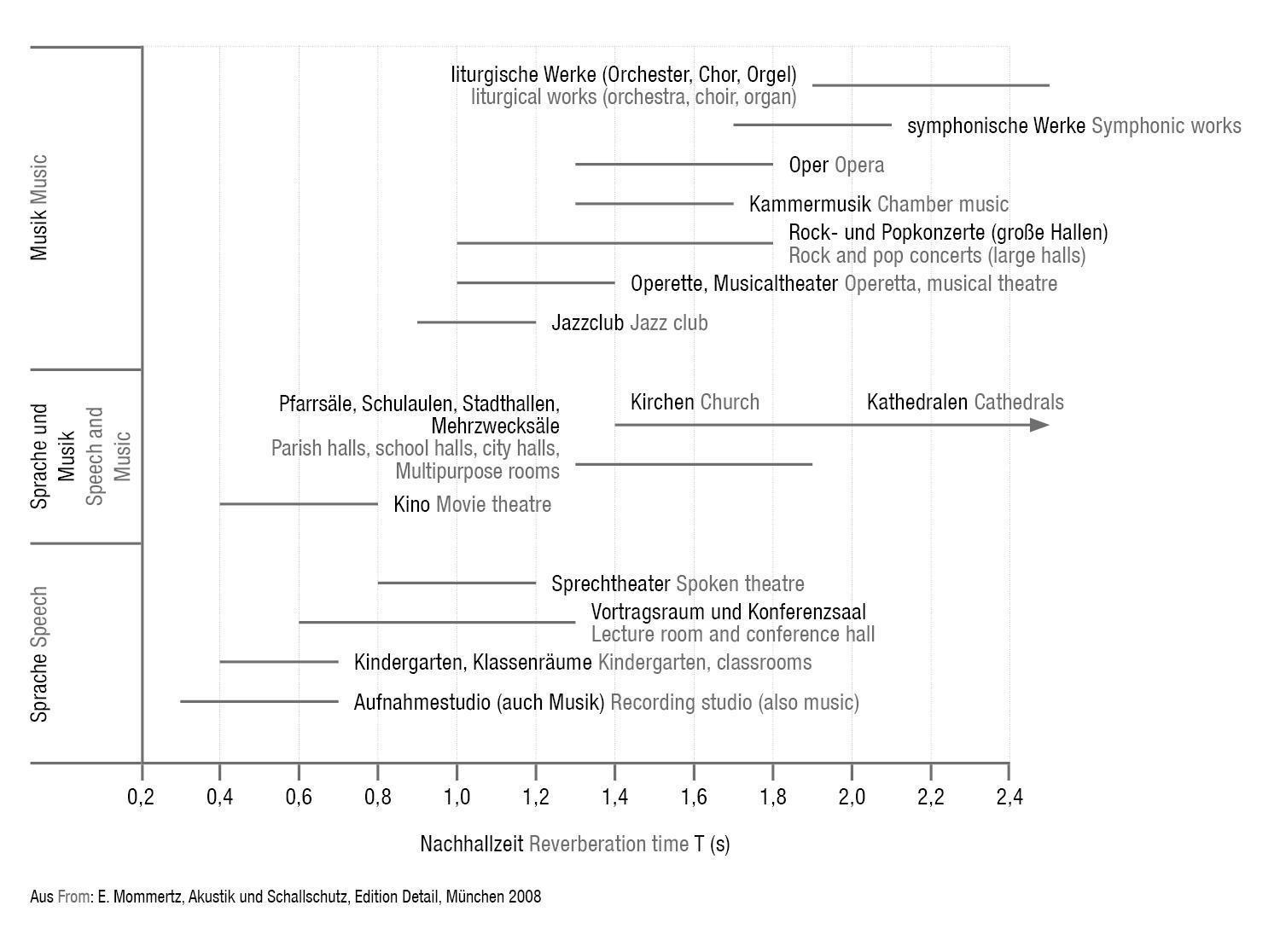
[Sound absorption]
To reduce the reverberation in a room, sound-absorbing materials must be introduced. Porous absorbers are often used, i.e. materials with a certain porosity, such as textiles or open-pored foams.
In such materials, the incident sound energy is converted into heat by friction and diffraction effects within the material and thus "swallowed". More rarely, membrane absorbers (also called plate transducers) or Helmholtz absorbers are used, which absorb the incident sound energy according to a different physical principle.
The property of how well a material can absorb sound is indicated by the dimensionless value α (sound absorption coefficient). It applies:
- α = 1 corresponds to a 100 % absorption
- α = 0 corresponds to 0 % absorption
The sound absorption capacity of different materials is strongly frequency-dependent, which is why the sound absorption in the reverberation chamber is also measured and specified as frequency-dependent. To make a simpler classification of materials, an average value can be formed from the frequency-dependent sound absorption coefficient, which is then assigned to a sound absorber class:
When measuring the sound absorption coefficient in a reverberation room, the type of installation is also decisive for the measured value. The measured absorption values of acoustic curtains can therefore not be given as a general rule, but should always be given in connection with the respective test setup.
We measure our curtains with 100 mm (4 inch) wall distance as standard
and both 0% and 100% fullness.
| Sound absorber class | αw-value range |
| A | 0,90 – 1,00 |
| B | 0,80 – 0,85 |
| C | 0,60 – 0,75 |
| D | 0,30 – 0,55 |
| E | 0,15 – 0,25 |
| Not classified | 0,00 – 0,10 |
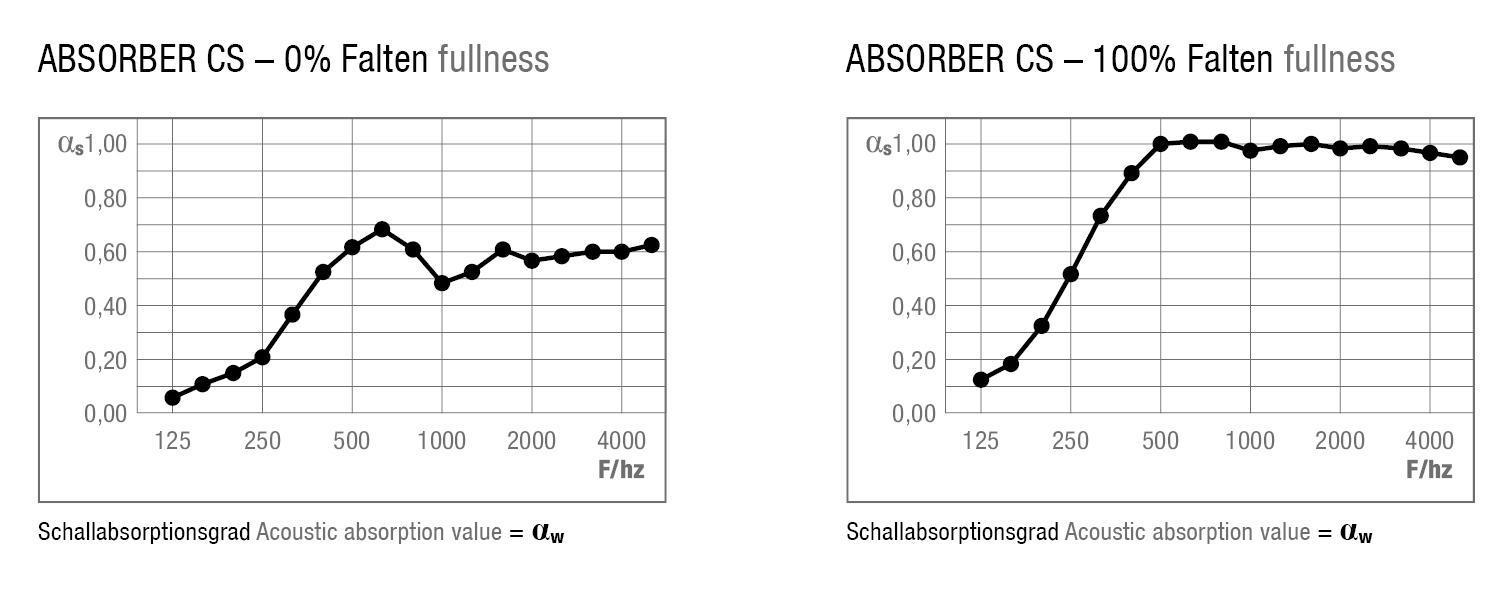
[Flow resistance]
As in the section Sound Absorption described, the impinging sound in porous absorbers, which also include most curtains, is achieved by friction effects in the material. To enable such friction, the flow resistance must be in a range between 500 and 1500 Pa s/m. If the value is significantly lower than this, the material can be described as sound-permeable. If the value is significantly higher, a large part of the sound energy is either reflected or passes through the material without further absorption of the sound energy. The flow resistance gives a statement about the acoustic properties of a material independent of the installation condition. However, the actual acoustic properties of a component must always be considered in connection with the installation on site, for which the sound absorption coefficient is measured.
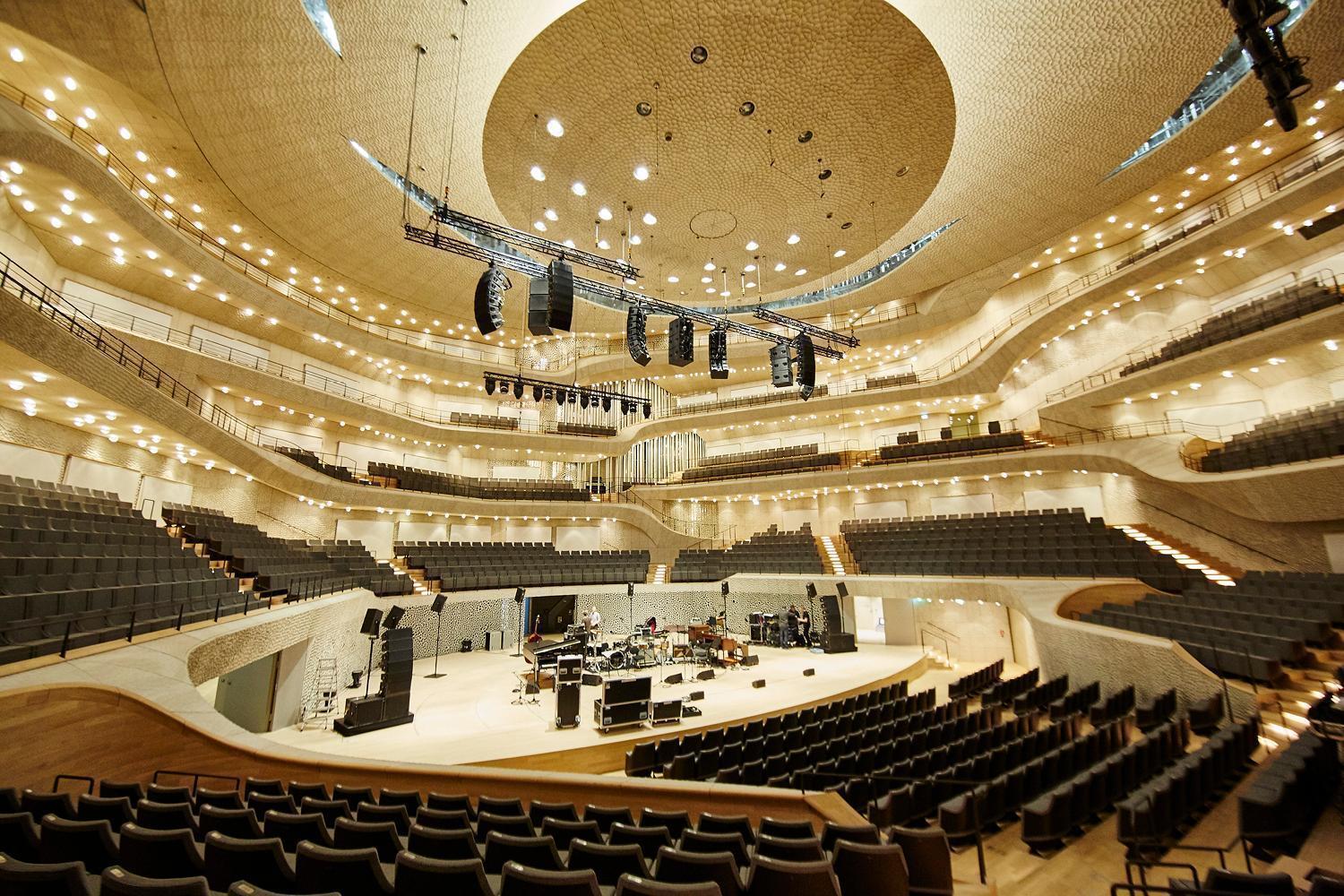
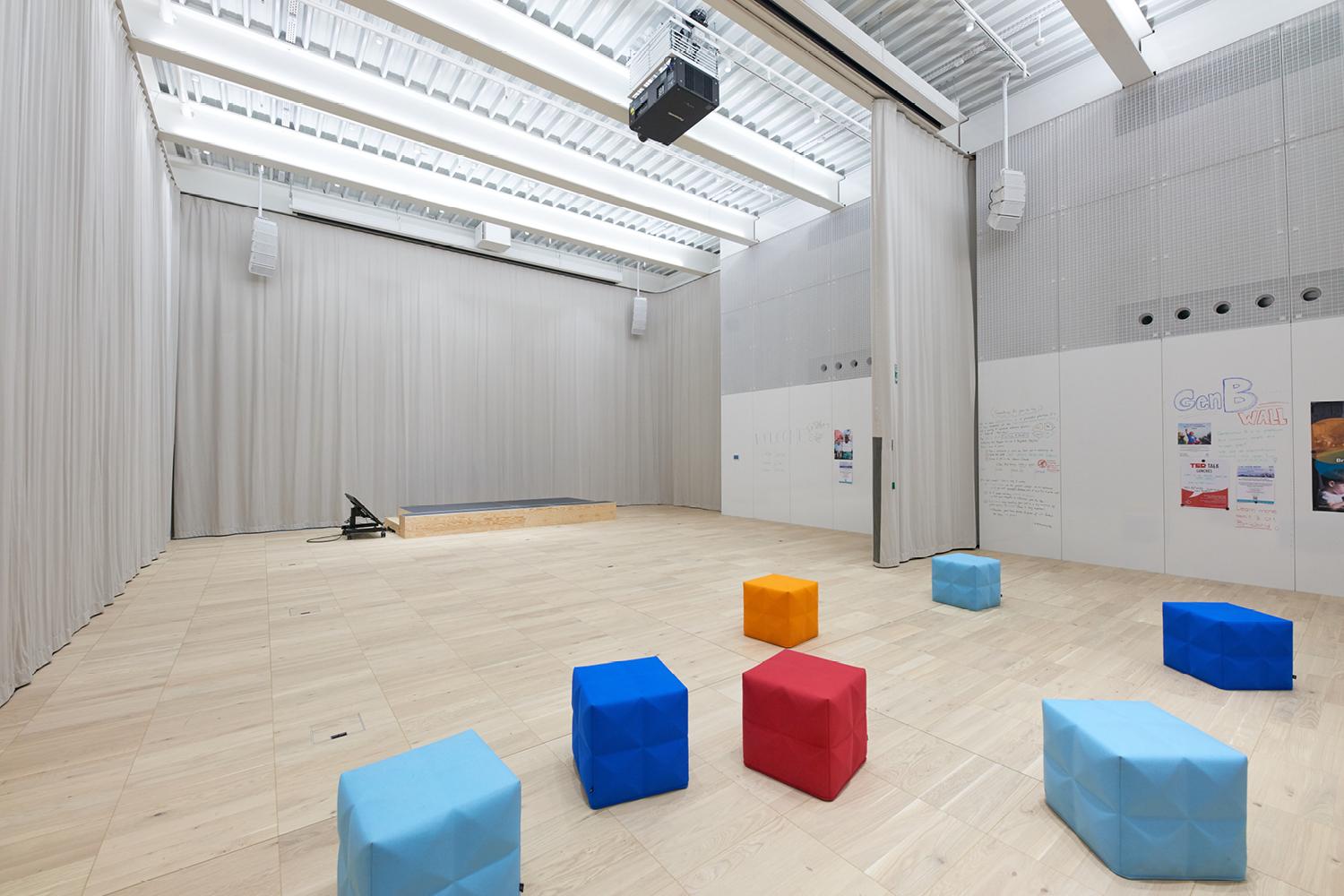
[Sound Insulation]
In the field of building acoustics, the sound reduction index of a building component is of particular importance. This indicates how strongly the incident sound is hindered from propagating. Compared to absorption, it is not a matter of reducing the reflections (and thus the sound pressure level and reverberation time) within an enclosed space, but to reduce the volume between two parts of the room or separated rooms. The sound insulation of a building component depends strongly on its weight and the composition of the materials.
The sound reduction index R is given in dB, i.e. in the same unit of value as the Sound Pressure Level. Here, doubling the sound pressure corresponds to a measured level increase of 6 dB. However, the perceived loudness of a signal depends on many other factors, such as the duration of exposure, the frequency or the spectral composition. A subjectively perceived doubling of volume corresponds to approx. 10 dB difference in level.

